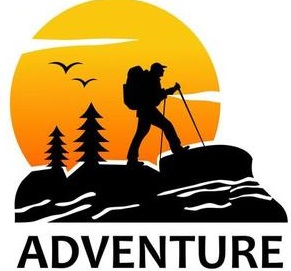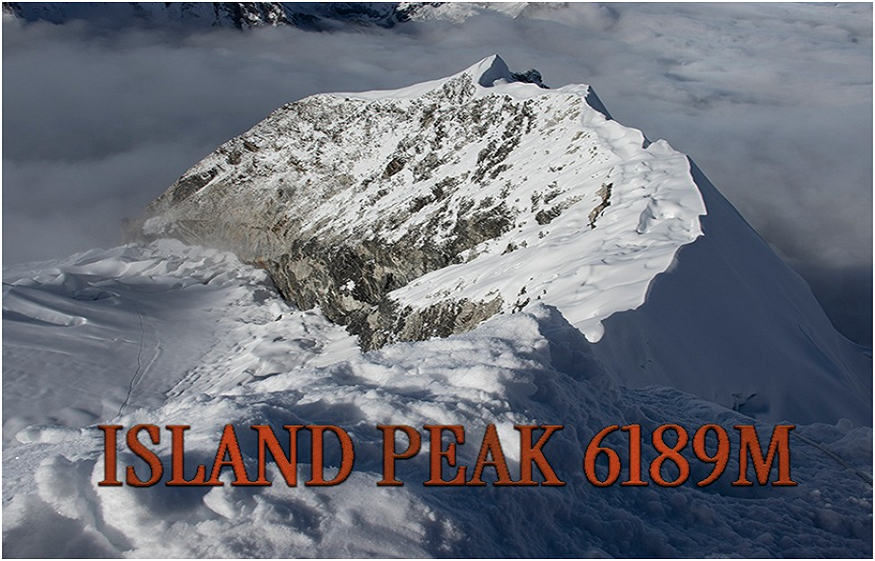The big Himalaya calls people. It calls from far away. Everest is one world where mountains, sky, and people mix. Many come here for trekking and climbing. Some go only to base camp; some go high on the peak. All feel something different. The path is dust, snow, stone, and also heart. This article talks about four big parts. Island Peak Climbing. Lobuche Peak Climbing. Mera Peak Climbing. Everest Base Camp Trek. All together, they make a complete Everest feel. Not one piece but the whole picture.
People want different things. Some want adventure. Some want a slow trek. Some want a mix of culture and high climbing. In Khumbu, all is possible. Sherpa village, prayer flags, glaciers, wild air. Each step you take, you feel old history and new dreams. This is what makes the Everest region special. This article has no perfect grammar but good meaning. You read and feel.
Island Peak Climbing
Island Peak is like a small mountain but still big. It stands at 6,189 meters. It looks like an island in the icy sea. That is the reason for the name. People who want to climb first choose this. It is famous. Near the Everest base camp route, many trekkers also come to see it.
The Island Peak Climbing is not too hard but not easy. It requires training. It asks for a strong heart. You walk from Lukla, Namche, Tengboche, and Dingboche and then go to Chhukung. Here you prepare. Sherpa guides teach rope, crampons, and ice axes. Night is cold. The tent shook with the wind. You feel nervous but also excited.Summit day starts dark. Headlamp, silent line of climbers. Crampons bite ice. You breathe heavily. Sunrise comes on Lhotse and Ama Dablam. You stand maybe at the top. You see endless snow. You feel small but also big inside. This is Island Peak. Good for the first Himalayan climb.
Sherpa people help a lot. They fix ropes and carry heavy smiles. They say “bistari bistari” slowly. You learn to respect. Not only climbing, but also culture. After the summit you come down. You are tired but happy. Heart full. This is an experience you will not forget.
Lobuche Peak Climbing
Lobuche Peak stands near the Everest base camp trail. It has two main summits, East and West. East is for normal climbers. The West is technical and needs permits. Lobuche East is 6,119 meters. It gives the best view of Everest, Nuptse, Lhotse, and Pumori.The trek starts the same as Everest base camp. Lukla, Phakding, Namche Bazaar, Tengboche, and Dingboche. At Lobuche village you turn to base camp. The route is rock, moraine, and glacier. You camp at High Camp, maybe at 5,400 meters.
The Lobuche Peak Climbing is a bit steeper than Island Peak. You need to fix rope skills, jumars, and descent devices. Night is clear. Stars shine like ice. Sherpa cooks soup. You drink slowly. Your stomach is not so good at altitude, but your mind is still strong.The summit push begins before midnight. You go over rock, then snow, then ridge. Rope already fixed. You clip and move. The air is thin. Each step is slow. But the view is open. You see the Everest black pyramid, you see the Khumbu glacier, and you see Ama Dablam sharp. At the top you cry, maybe. Because you did something big.
Coming down is careful. Rope descent, ice fall risk. But with a safe guide. You reach camp, and you hug a friend. You eat noodles. You smile. Lobuche Peak gives a more technical feel than Island Peak. It is the next step for climbers.
Mera Peak Climbing
Mera Peak is the tallest trekking peak of Nepal. 6,476 meters. It stands in the Hinku Valley, a bit east of the Everest region. It is not too technical but high. It needs stamina. Many use this for tests before big mountains.
The Mera Peak Climbing is different. You fly to Lukla but go southeast. Through forest, small village, wild path. Not many people. More quiet. You cross Zatra La pass. You enter Hinku Valley. Rhododendron, river, yak pasture. You feel raw, Nepal.
You sleep in a lodge or camp. Sherpa guides carry loads. You learn again about rope and crampons. At Mera Base Camp (5,300 m), you see glaciers above. High Camp at 5,800 m on a rock ridge. Night is cold like space. You wear all the clothes. Wind hit the tent.
Summit day is long. You walk on a wide glacier. Gentle but high. You breathe heavily. The heart beats like a drum. Slow. The sky becomes orange. Peak becomes gold. At the top of Mera you see five 8,000 m giants. Everest, Lhotse, Makalu, Cho Oyu, and Kanchenjunga are far. All visible. Big panorama.
Mera teaches patience. It is high but not steep. It is about endurance. You return to base camp tired but proud. This climb gives you a real Himalayan feel. Big, wide, remote. Not only the summit but also the journey.
Everest Base Camp Trek
The Everest Base Camp Trek is a classic. 5,364 meters at base camp. Not climbing but still high. People from all over the world come. Because this trek is a story. This trek is a dream.
You fly to Lukla. Small plane. Short runway. Heartbeat. You walk through forests, rivers, and suspension bridges. Namche Bazaar is a big town with a market, a bakery, and a gear shop. Sherpa culture is shown here. Monastery at Tengboche with monk chants. The trail goes higher. Dingboche, Lobuche, and Gorakshep. Each place has more rock, fewer trees, and more cold.
You see Ama Dablam like teeth. You see the Nuptse ridge. You see the prayer flag. Yaks carry loads. Children smile. Old Sherpa tells a story. This trek is not only for mountains but also for people.At base camp you stand on Khumbu Glacier. Icefall roared. Tent of climber. Big mountain wall. You feel small but alive. Many cry. Many are silent. You take a photo. You dream of a summit, maybe.
You also climb Kala Patthar (5,545 m) for a sunrise view. Everest peak is visible from here. Golden light. The wind is cold. Heartwarming. This is a moment you will never forget.The Everest Base Camp Trek is a path where history walks. Tenzing Norgay and Edmund Hillary all pass here. You also pass. You feel a connection.
Putting It All Together
Doing only one of these is already special. But doing a mix is a complete Everest experience. You trek to base camp. You climb Island Peak. You may also like Lobuche or Mera. Each gives a different taste.Island Peak teaches the first climb. Lobuche is more technical. Mera gives high endurance. Everest Base Camp gives a story and path. All together it is full. Full of culture, challenge, and memory.Sherpa guides make it safe. They know mountains. They smile, they pray. You learn from them. You respect mountains. You go slow. You breathe. You carry only what is needed.
Training before coming is wise. Cardio, stairs, hike. Learn crampon and rope. Learn about altitude. Bring a good boot, a warm jacket, and a sleeping bag. Also bring an open heart. Mountains teach you humility.Season matters. Spring and autumn are best. Clear sky. Less snow. Many climbers. Winter is cold and dangerous. Monsoon is wet and hard.A permit is also needed. Island Peak, Lobuche Peak, and Mera Peak all need special permits. The Everest Base Camp trek needs a national park and Khumbu permit. Your agency arranges.
After you are done, you come back home. But part of you stays there. In the Khumbu Valley. In the wind of a high peak. In the smile of a Sherpa. In memory of your step. This is a complete Everest experience.
Conclusion
The Everest region is not only one trek. There are many doors. Each door opens a different view. Island Peak Climbing, Lobuche Peak Climbing, Mera Peak Climbing, and Everest Base Camp Trek together are like a book of mountains with four chapters. Read all, you know the whole story.The meaning is still clear. The flow is from the heart. You can imagine the trail, the ice, and the people. You can almost feel your boot on the path.If you dream of the Himalayas, maybe start a plan. Start the train. Start saving money. One day you go. You walk. You climb. You feel. You live.
Contact Details
Company address: Everest Trekking Routes Pvt. Ltd.
16 Khumbu, Nayabazaar, Kathmandu, Nepal
Mobile : +977-9843467921 (Rabin)
Email: [email protected]

